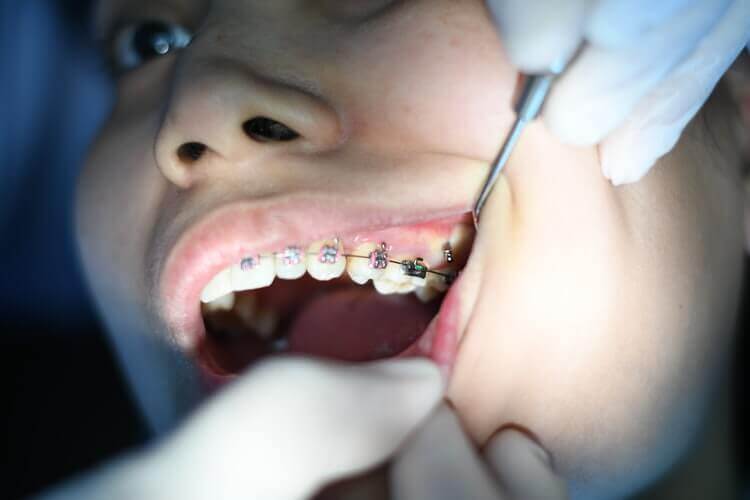All Star Family Orthodontics - The Facts
All Star Family Orthodontics - The Facts
Blog Article
All Star Family Orthodontics Things To Know Before You Buy
Table of ContentsThe Ultimate Guide To All Star Family OrthodonticsSee This Report about All Star Family OrthodonticsThe 30-Second Trick For All Star Family OrthodonticsOur All Star Family Orthodontics StatementsThe Ultimate Guide To All Star Family Orthodontics

In enhancement, we supply flexible therapy timetables, flexible payment options and a fun, delightful experience.
An orthodontist is a dental professional educated to identify, prevent, and deal with teeth and jaw irregularities. Orthodontists function with people of all ages, from youngsters to grownups.
Malocclusion, or misaligned teeth, can lead to dental issues, consisting of dental cavity, gum tissue disease, and tough or unpleasant chewing. Yet not everybody is born with straight teeth. If you have a negative bite or huge areas in between your teeth, you might wish to seek advice from a dentist concentrating on orthodontic treatment.
All Star Family Orthodontics Can Be Fun For Everyone
(Photo Credit Score: DigitalVision/Getty Images) Orthodontists use repaired and removable oral tools, like braces, retainers, and bands, to change the placement of teeth in your mouth. Orthodontic treatment is for dental problems, including: Crooked teethBite troubles, like an overbite or an underbiteCrowded teeth or teeth that are also much apartJaw misalignmentThe goal of orthodontic treatment is to enhance your bite.
A healthy and balanced bite ensures you can consume, chew, and speak correctly. While you might consider orthodontists as mostly for kids or young adults who require dental braces, they can fix oral troubles at any kind of age. Orthodontists attend college, dental college, and orthodontic school. After graduation, they spend 2 or 3 years in an orthodontic residency program.
, but not all dental professionals are orthodontists. They focus on 2 locations: How to properly and securely move teeth Just how to properly guide advancement in the teeth, jaw, and faceOnce an orthodontist has actually finished training, they have the option to come to be board accredited.
All Star Family Orthodontics for Dummies
Misalignment, or malocclusion, is the most usual reason individuals see an orthodontist. Malocclusion is generally treated with: Your orthodontist connects steel, ceramic, or plastic square bonds to your teeth.
If you have just minor malocclusion, you might be able to use clear dental braces, called aligners, as opposed to conventional dental braces. Some individuals require a headwear to help relocate teeth right into line with stress from outside the mouth. After dental braces or aligners, you'll require to use a retainer. A retainer is a custom-made device that keeps your teeth in position.

You may need to see an orthodontist if you have: Crowding or not sufficient space for all of your teethOverbite, when your top teeth come your bottom teethUnderbite, when your bottom teeth are too much forwardSpacing or concerns with gapsCrossbite, which is when your top teeth fit behind your base teeth when your mouth is closedOpen bite or an upright void in between your front base and upper teethMisplaced midline, when the center of your base and top teeth don't align Dealing with a dental malocclusion can: Make biting, eating, and speaking easierImprove the balance of our face and your general appearanceEase pain from temporomandibular joint disordersDifferent your teeth and make them easier to cleanse, assisting avoid dental caries or tooth cavities It's often a dental professional who first notifications misaligned teeth during a routine test.
All Star Family Orthodontics Things To Know Before You Get This
Throughout your first orthodontic examination, you'll likely have: A dental examPhotos taken of your face and smileDental X-raysPanoramic (360 degree) X-rays of your face and headImpressions to develop mold and mildews of your teethThese tests will aid your orthodontist recognize exactly how to wage your treatment. An orthodontist is a dental orthodontics professional that's had training to treat your teeth and jaw.
Orthodontists are dentists however not all dental professionals are orthodontists. Orthodontists are concentrated on your bite, or the means your teeth fit together, and the straightness of your teeth.

This initial examination entails an aesthetic examination of your teeth and attack, X-rays, and possibly also 3D scans. By thoroughly reviewing these elements, the orthodontist can pinpoint any kind of imbalances, crowding, spacing problems, or jaw inconsistencies. When a clear picture is established, the orthodontist will certainly review tailored therapy choices. This conversation will cover the kind of dental braces or aligners suggested (conventional metal braces, clear aligners like Invisalign, and so on), the approximated therapy duration, and any kind of possible obstacles or adverse effects.
10 Easy Facts About All Star Family Orthodontics Described
While dental braces are the most commonly identified orthodontic treatment, orthodontists have a varied toolkit at their disposal. The certain approach picked relies on the seriousness of the situation, the patient's age, and individual choices. These tried-and-true dental braces use a system of braces bonded to the teeth and linked by wires.
Clear aligners, like Invisalign, are a preferred option for people seeking a more very discreet treatment choice. These removable trays are tailor-made to progressively move the teeth's placement. Headwear may be utilized along with dental braces or aligners to use added targeted pressures, particularly for remedying jaw inconsistencies. In instances of slim jaws, palatal expanders can be made use of to create area for appropriate tooth placement.
Report this page